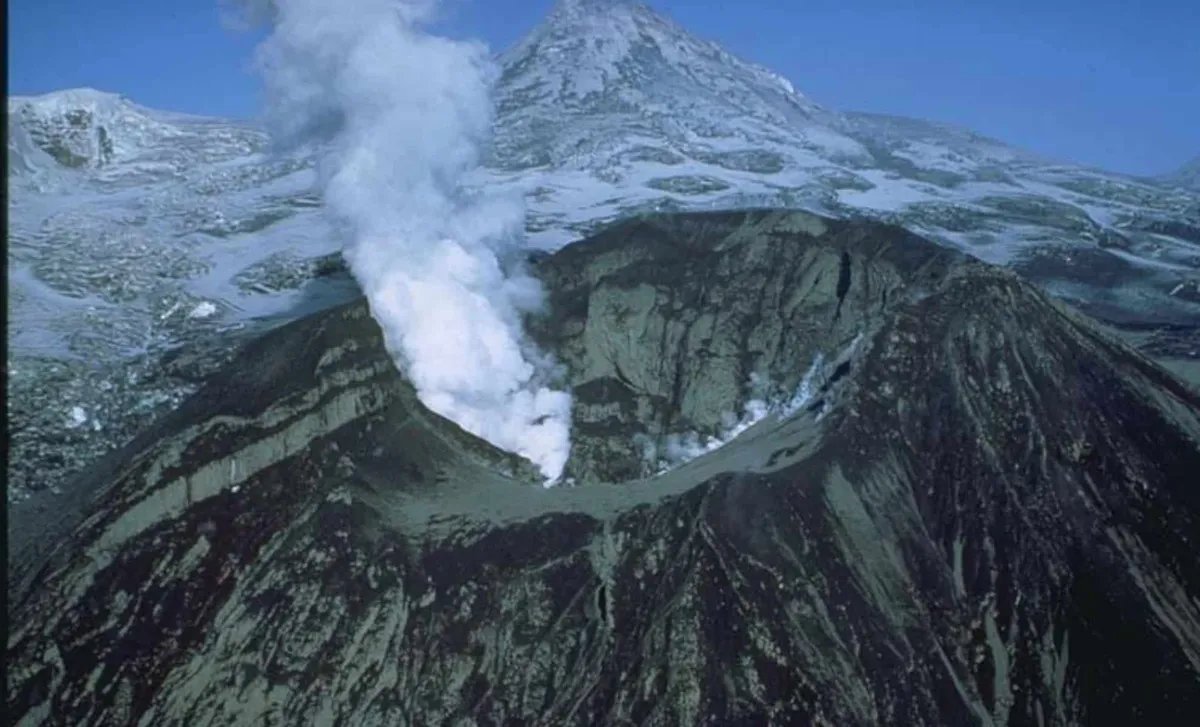
Mount Spurr, a towering snow-capped stratovolcano in Alaska, has long captivated scientists, but recent developments have raised significant concerns. The Alaska Volcano Observatory (AVO) has been meticulously monitoring an increase in seismic activity around the volcano since April 2024. This earthquake surge suggests that the volcano may be preparing for another eruption. Located just 77 miles (124 kilometers) from Anchorage, Mount Spurr’s volatile nature poses a risk to both the local population and infrastructure, especially if a large eruption were to occur. Currently, scientists warn of a 50-50 chance that an eruption will take place in the near future.
Since early 2024, Mount Spurr has experienced a higher-than-normal number of earthquakes, an unsettling sign of potential volcanic activity brewing beneath the surface. According to Matt Haney, the scientist-in-charge at the Alaska Volcano Observatory at the U.S. Geological Survey, this surge in seismic activity has intensified recently. Haney noted, “It’s had a higher-than-normal number of earthquakes for many months. But over the past month, that itself increased, and also the location of the earthquakes changed.” Initially concentrated near the mountain’s peak, these tremors have now shifted two miles (3 kilometers) down the slope, closer to a side vent known as Crater Peak. This vent, which erupted in 1992 and 1953, is once again becoming the focal point of activity, prompting experts to remain on high alert.
The seismic shift to Crater Peak signals a potential change in the volcanic dynamics of the mountain. If an eruption occurs, it is expected that Crater Peak would be the most likely site, given the earthquake migration and historical eruption patterns. In both the 1992 and 1953 eruptions, Mount Spurr released massive columns of ash high into the atmosphere—up to 65,000 feet (20,000 meters)—which significantly impacted local communities and disrupted air travel. According to Haney, the chance of this happening again is 50-50, meaning the volcano could either continue to show signs of unrest without erupting or enter a more active phase.
If an eruption were to occur, the consequences could be severe. Pyroclastic flows, which are fast-moving avalanches of hot gas, ash, and rock, could surge down the volcano’s slopes at speeds of over 200 mph (320 km/h). These flows would destroy everything in their path and could travel great distances from the vent. Additionally, melting snow and ice from the volcano could mix with volcanic debris to create mudflows known as lahars, which are highly destructive and can cause widespread flooding. However, as Haney notes, there are currently no communities directly in the path of these potential lahars or pyroclastic flows. The biggest concern would be the impact on air travel and local infrastructure.
In 1992, an eruption from Crater Peak led to the shutdown of Anchorage’s airport and left the city covered in 0.1 inches (3 millimeters) of ash. Given the increase in air traffic in the region since then, Haney highlights that any eruption could have far more significant consequences for air travel today. “Today there are even more flights coming in and out of the Anchorage airport, so if something like that were to happen, it would be very disruptive,” he says. In addition to disrupting local flights, a large ash cloud could also affect flights that traverse Alaska as they make their way between North America and Asia, potentially causing major disruptions to global air traffic.
Scientists at the Alaska Volcano Observatory are closely monitoring the earthquake activity around Mount Spurr to look for further signs that an eruption is imminent. During the 1992 eruption, the volcano’s earthquakes evolved into a consistent seismic tremor, a steady shaking that serves as a precursor to the eruption itself. According to Haney, this is one of the key indicators they are looking for in the current seismic data. He explains, “If we saw this more long-duration shaking of the volcano in our seismic data, that would be a more clear indication that the unrest is progressing toward a more certain eruption.” If this pattern emerges, scientists will be able to provide more accurate warnings to the public and relevant authorities.
However, Mount Spurr has a history of earthquake swarms that do not always lead to an eruption. In 2004 and 2005, the volcano experienced a similar increase in seismic activity, but the unrest eventually subsided, and no eruption occurred. This presents a level of uncertainty, as earthquake activity does not always result in imminent volcanic eruptions, and Mount Spurr has gone quiet in the past without further incident.
Despite the uncertainties, the surge in earthquake activity and the shifting seismic focus near Crater Peak have raised serious concerns about the potential for an eruption. The growing activity at Mount Spurr is a stark reminder of the volatile nature of volcanoes in Alaska—a region that sits within the Pacific Ring of Fire, an area with frequent seismic and volcanic activity. As scientists continue to monitor the situation, the 50-50 chance of an eruption reflects the current level of unpredictability. Should an eruption occur, the results could be catastrophic, particularly for air traffic and local communities.
For now, scientists are using state-of-the-art monitoring techniques to stay ahead of potential developments. As they continue to analyze the seismic data, the hope is that early detection will provide time to prepare and mitigate the impact on both human populations and infrastructure. The coming weeks and months will likely provide the clearest indication of whether Mount Spurr is preparing for an eruption or whether this period of unrest will pass without incident.
Got a reaction? Share your thoughts in the comments.